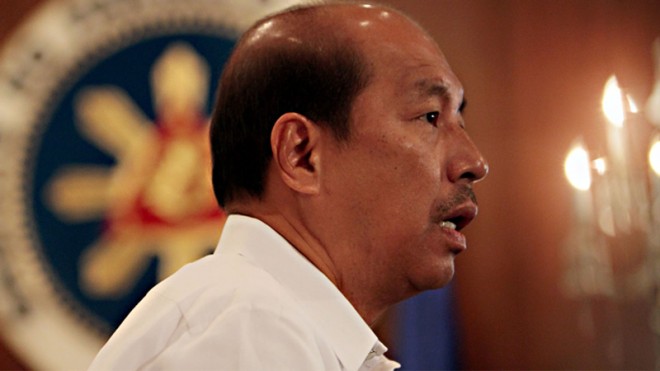“Growing pains” is what’s causing the government to underspend severely, slowing the delivery of vital services, particularly the construction of classrooms, according to Budget Secretary Florencio Abad.
In 2014, the government disbursed only about 13 percent, or P303 billion, of the P2.3-trillion national budget. This has been blamed for the anemic 6.1-percent growth of the economy for that year.
“This is a problem of growing,” Abad told the joint congressional oversight committee on public expenditures at the House of Representatives.
To Senate finance committee chair Sen. Francis Escudero’s question about why government spending was so low, Abad cited as an example the low figures for the construction of classrooms.
He said the shift to the K to 12 program changed the targets for classroom construction from 6,000 to 40,000.
With two years of senior high school added to the 10-year basic education curriculum, more classrooms will be needed by the time the K to 12 program is fully implemented in 2016, he explained.
“The problem is that the capacity does not expand as fast as the requirements. This is growing pains. It takes a longer time for schools and the DepEd (Department of Education) to adjust to these changes,” Abad told reporters after the meeting.
In fact, he said, “we have made a lot of improvements.”
“Now we’re requiring them to disaggregate. We require them also to preprocure. A measure we will do, for example, for 2017, [is to] ask the DepEd to start identifying school sites as early as the first quarter of 2016 so they will have a full year to make the preparations,” Abad said.
Finance Secretary Cesar Purisima said the whole procurement process also needed to be revisited.
“It’s really intended to slow down procurement. The fastest it can take is six months. But if you look at the private sector, once they have a plan, they can have it on the ground in a month or so,” he said.
“Rather than focus on the fact that we have excess budget that is not being implemented, we have to look at bottlenecks that’s slowing down the capacity of agencies to spend their budgets,” Purisima told the body.
Speaking to reporters after the meeting, Escudero said the low underspending was “really worrisome.”
“It’s not just affecting the economy, it’s delaying the delivery of basic services to our people, particularly the underspending on our classroom program,” he said.
Government economic managers told the hearing that “structural weaknesses” within national government agencies accounted for the bulk of the unspent funds, with 42 percent, followed by peculiar problems of agencies, with 30 percent.
Fourteen percent accounted for savings generated from lower interest payments and lending, while 12 percent for other reasons beyond the agencies’ control.
Only one percent accounted for the refocusing of funds for the Supertyphoon “Yolanda” rehabilitation effort, and another one percent for unused funds for projects orphaned by the Supreme Court decisions striking down the congressional Priority Development Assistance Fund and the Disbursement Acceleration Program.


